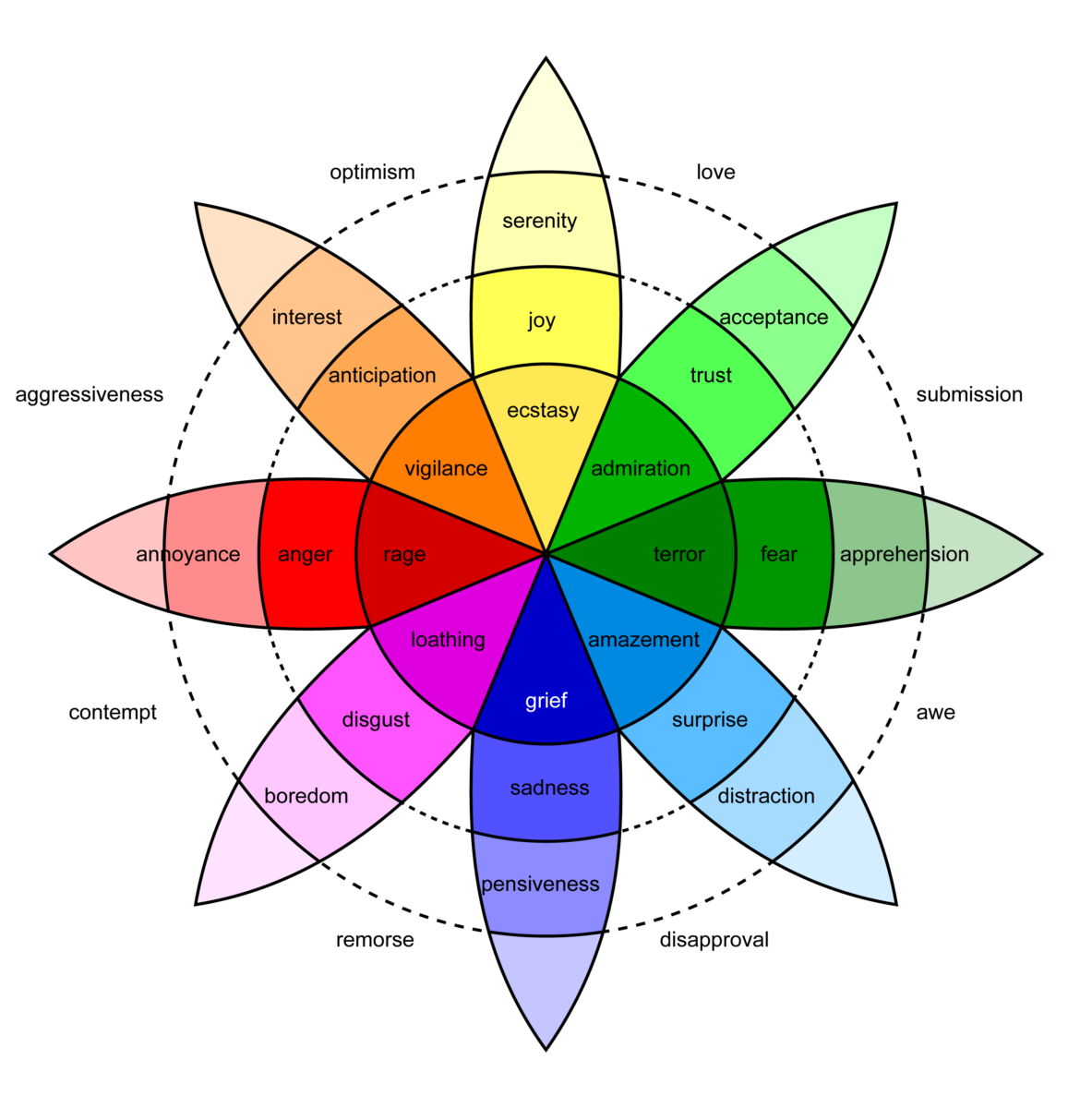How feeling sad can help us find more joy

Author’s Note: This post was originally published on December 18, 2021. It has been updated and reposted.
They say you’re not officially a New Yorker until you’ve cried on the subway. If this is true, then I’m probably a New Yorker about ten times over by now. I remember one time in particular when, still reeling from a bad breakup, I had attended a cocktail party celebrating a friend’s engagement in the city. Watching all my coupled friends talk about their wedding plans and registries, I began to think I’d be alone forever. I had stopped at Whole Foods to pick up dinner from the hot bar, and as I headed home to an empty apartment on the F train with my lonely little box of organic cafeteria food, I was overcome with sadness.
My heart rate increased, my eyes began to water, and soon I was sobbing so hard my vision was blurry. A stranger asked if I was ok, and when I calmed down a bit, proceeded to hit on me. I was relieved when the train screeched into my station, and I could snuffle “This is my stop,” before bolting out the door and into the night.
A sudden sad mood can catch us off guard like that, and when it does, we don’t always quite know what to do about it. In the era of positive psychology, we’re all well-versed in the benefits of joy and happiness, and certainly I’m a believer in those benefits. But at times our bright-sided culture can oversimplify the emotional spectrum into equations: joy = good, sad = bad.
How Feeling Sad Can Help Us Find More Joy
In reality, feeling more joy doesn’t mean eliminating sadness from our vocabulary. Paradoxically, it might mean feeling our sadness more deeply. When we numb ourselves to avoid feeling so-called negative emotions, we end up also blunting our capacity to feel positive ones. One example of this is bracing, where we end up holding back from joy because we’re so afraid of the disappointment or loss we might feel when it ends.
There are other benefits of sadness, too. When we feel deep sadness or loss, it makes us appreciate what (and who) we have in our lives. Grieving a loved one can increase our gratitude for the time we had with that person, and make us more present to our loved ones who are still with us. Losing an opportunity we badly wanted can help focus our attention on what really matters to us. And feeling deep sorrow can provide a valley against which we will measure the heights of our future joy. I often feel that the darkest days of my infertility intensify the joy I find in being a parent now. Even when parenting gets hard, I can still see with clear eyes how lucky I am to have Graham, and it helps me find delight amidst the struggle.
How to Be Sad
Recently, I had a chance to chat with bestselling author Helen Russell about her new book, How to be Sad (also the title of her podcast). In our conversation, Helen shared wisdom and research from her book on why we struggle so much with feelings of sadness, what to do when we’re feeling sad, and how sadness can help us ultimately find more joy. (Watch the full conversation here.)
No one likes to be in a negative mood, but Westerners have a particular tendency to avoid it. In her book, Helen shares research from psychologist Jeanne Tsai at the Culture and Emotion Lab at Stanford which says that our obsession with the pursuit of happiness has resulted in a view that sadness is a kind of failure. Because we’ve been sold the idea that happiness is something we should be able to achieve on our own terms, sadness means that it’s our fault that we’ve somehow missed the mark. For example, the sadness of a breakup or losing a job can make us feel ashamed. We think we didn’t try hard enough, when in fact it was simply poor timing, corporate downsizing, or bad luck. (For those experiencing depression or any other mood disorder, this idea of personal responsibility can be especially damaging.)
Many Westerners, British people in particular, also have a “keep calm and carry on” mentality that views sadness as indulgent. We’re supposed to ignore negative feelings and push through, or we risk being a “Debbie Downer” or a “wet blanket.” Heaven forbid we ruin other people’s good time. This may be why so often we feel the need to apologize for being sad. As Helen notes in her book, the words “sorrow” and “sorry” come from similar origins.
Why It’s Okay to Feel Sad
Sadness is, of course, an inevitable part of life. Avoiding it doesn’t make it go away — it might even prolong it. That’s because emotions don’t disappear when we avoid them. They just come back in a different way, when a new trigger activates an old, unhealed wound. “If we have poor emotional regulation,” Helen says, describing the research of Nathanial Herr on how we manage and process difficult feelings, “it will manifest in three ways. We’ll feel that emotion more quickly than other people might. It will stay with us for longer. And also it will take us longer to come down from that.”
Avoiding sadness can also lead to a range of maladaptive coping behaviors that we use to try to numb our emotions, from drinking and drugs to disordered eating to workaholism. In How to be Sad, Helen quotes psychologist Julia Samuels, who says, “I have regularly seen that it is not the pain of loss that damages individuals, but the things they do to avoid that pain.” Blocking out our sorrow prevents us from coping with it. Allowing ourselves to feel sadness enables us to move through the emotion so we can access our resilience. To that point, Helen notes that studies show that people who allow themselves to feel sad in response to difficult events are happier in the long-term than those who try to avoid or repress it.
I think many of us avoid sadness because we’re afraid it will overwhelm us. But learning how to navigate sadness is critical to avoid adding fear or shame on top of it. Knowing this, here are five ways Helen Russell shares that can help you deal with difficult feelings in healthy ways.
Allow space to feel
“The first rule of sad club is ‘Don’t fight it,’” says Helen. Give yourself a designated time, even just five minutes, to sit (or walk, or write) with the sad feelings. When you make space for those difficult feelings, it decreases the likelihood they’ll burst out at a time when you don’t want them to, like on the subway, or when you sit down next to a family member at a holiday meal.
This is helpful if you find yourself triggered by other people’s good news while you’re going through a tough period. Helen mentioned having to show up for a string of work baby showers while she was going through IVF. She always allowed herself a few minutes to feel and recompose herself, rather than pushing through. You can also ask friends to email or text if they have good news instead of doing it in person. This allows you to process and react to their good news while still keeping space for your own sorrow.
Have a good cry
As someone who tends to break into tears at the slightest provocation, I was heartened to discover that crying can actually be beneficial. Helen cites research that shows that people who cry are less likely to feel “negative aggressive feelings” — these are feelings like rage and disgust — than non-criers. In other words, tears help us channel our feelings of sadness in less harmful ways. Crying also seems to decrease levels of cortisol, a stress hormone, and help elicit social support. Unlike venting anger, which can actually increase aggression and make us feel worse, expressing our sadness through words and sobs can be a valuable mode of self-soothing.
Yet crying is often seen as a sign of weakness, especially for men. Our socialization plays a role here. “By the age of ten, boys are told ‘Don’t cry’ and girls are told, ‘Don’t get angry,’ but you’re allowed, perhaps, tears of frustration,” says Helen. So society coaches men to express anger and women to cry, but not too much, and only in private. Normalizing emotional expression, including crying, can help make it safer for all of us to feel our emotions more honestly.
Get granular
Are you feeling sad or melancholy? Are you irritated or frustrated? If we don’t want to look too closely at a feeling, sometimes we say we’re blue and leave it there. But it turns out that examining our sadness and putting words to the feeling helps us process those difficult emotions. This technique, known as emotional granularity or emotional differentiation, involves precisely naming and describing our emotions, and has been shown to help improve mental health outcomes.
This is particularly relevant given what Helen shared about our gendered lens on emotion. Because sadness is more acceptable for women than anger, women who examine their sadness may find anger underneath it. Addressing that anger may end up being more effective in resolving the sadness, because it helps identify the root cause. On the flip side, some men default to anger because they’ve been conditioned to see tears as weak. Identifying the loss behind the anger can make it possible to grieve and heal.
Plutchik’s Wheel of Emotions
To practice emotional granularity, explore different words for how you’re feeling. Try each one on and see how it fits. A helpful tool for this is Plutchik’s wheel of emotions (below) which shows related emotions at different intensities. Another way to distinguish emotions is to pay attention to the physiological experience of your emotions. What does the emotion feel like in your body? Instead of saying “bad” or “hurts,” try descriptive words like “heavy,” “sharp,” “cold,” or “pulsing.” For example, I’ve learned that sometimes my tears are accompanied by a feeling I can only describe as “frothy.” Over time, by paying attention to when I get that feeling, I’ve discovered that it comes when I feel a sense of helplessness, like I’m afraid my needs won’t be heard or met. This feeling is more specific than “sad,” and it gives me clearer direction on how to resolve my situation.

By getting to know the physical character of your emotions, you can start to recognize different feelings more readily, and understand the messages behind your automatic responses.
Phone a friend
If you’ve watched the Pixar film Inside Out, you probably remember that one of the functions of sadness is to elicit social support. Being sad lets others know we need them. And we do need a friend in tough times — not to “fix” or solve our problems, but simply to listen. Talking to a friend helps lighten the burden of sadness. In her book, Helen shares a Greek saying, “When grief is shared it is halved.”
Often when we’re experiencing sadness, shame is just around the corner. We may feel ashamed of our inability to control our emotions, of losing a job or a partner, or of not reaching a life milestone when we (or others) believed we should. Having the support of a friend can help ward off shame by reminding us that we’re not alone, and that we’re loved despite our failings.
Talking to a friend also allows us to practice that skill of emotional granularity. By working through our feelings with someone we trust, we bring the emotions up into the light and get a closer look at them.
Helen recommends a buddy system: a friend who listens without judgment and you can do the same for them.
Seek out sad art
It might seem strange, but a lot of the music I like to listen to has a melancholy tone. Of course, my happy dance playlist is my go-to for a Friday evening or when doing chores. But in more reflective moments, I prefer The National and Leonard Cohen — songs that sound like dark shadows. I think that this is because those moody tunes help me access feelings that might be harder to express. Music reaches into our sad places, and helps us let our emotions out.
Watching a sad movie or reading a tearjerker of a book can do the same thing. In a post called “Let it out” that I wrote just a couple of weeks before Covid first hit the US, I shared a tweet from writer Chuck Wendig that suggests watching the animated movie Coco as a way to process grief. Visual arts and poetry can also stir the emotions and help provide a kind of catharsis. Mark Rothko’s paintings get me every time.
You might think that this is “cheating.” Am I really feeling my feelings if I’m crying over a cartoon skeleton with a guitar? But the truth is that sometimes it’s hard to feel our sadness directly. If art can help us access some of those feelings through harmony or allegory, we can experience a kind of catharsis that gives us some relief.
What I love about Helen’s suggestions is that they offer a range of tools for dealing with difficult feelings. While not all of these will be appropriate in every situation, having options helps us navigate our sadness better. We can’t eliminate sadness from our lives, but we can find better ways to move through it, heal our wounds, and ultimately, more joy.
For more ways to manage difficult emotions, check out Helen Russell’s excellent book How to be Sad.
Image: Larm Rmah via Unsplash




Discussion (4 Comments)
Great article, thanks!
Thank you for this beautiful article. It resonated deeply with me, as often with your writing. I will definitely read the book you recommend.
Absolutely agree about the music – when I’m feeling low but not really sad, I listen to the Smiths and gain comfort from the fact that I’m not that miserable, and when I feel really down, I listen to Gene, and Martin Rossiter and embrace my sadness.
Great, insightful article. I am such a fan of your work!